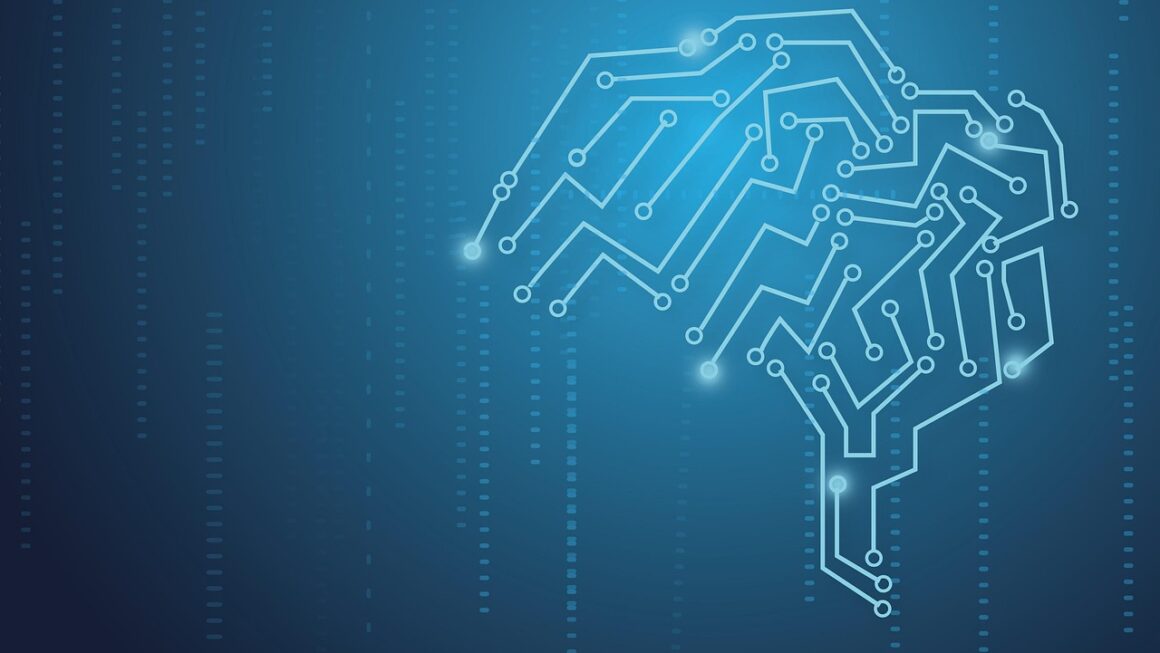Ethical AI is no longer a futuristic concept; it’s a pressing necessity reshaping our world. As artificial intelligence permeates every facet of our lives, from healthcare and finance to transportation and entertainment, the ethical considerations surrounding its development and deployment become paramount. This blog post delves into the intricacies of ethical AI, exploring its key principles, challenges, and practical implications, providing a comprehensive guide to navigating this complex landscape.
Understanding Ethical AI
What is Ethical AI?
Ethical AI refers to the development and deployment of artificial intelligence systems that adhere to moral principles and values. It encompasses a broad range of considerations, ensuring AI systems are fair, transparent, accountable, and beneficial to humanity. It’s about designing and using AI responsibly, mitigating potential harms and maximizing societal good.
- Fairness: AI systems should not discriminate against individuals or groups based on protected characteristics like race, gender, or religion.
- Transparency: The decision-making processes of AI systems should be understandable and explainable.
- Accountability: Mechanisms should be in place to hold developers and deployers of AI accountable for the outcomes of their systems.
- Beneficence: AI systems should be designed to benefit humanity and minimize potential harms.
Why is Ethical AI Important?
The importance of ethical AI stems from the potential for AI systems to have profound impacts on individuals and society. Unethical AI can perpetuate existing biases, leading to unfair or discriminatory outcomes. Consider the example of facial recognition technology that has been shown to be less accurate for people of color, potentially leading to wrongful identification.
- Prevents bias and discrimination in AI systems.
- Builds trust and confidence in AI technology.
- Promotes responsible innovation and development.
- Safeguards human rights and fundamental freedoms.
- Ensures AI benefits all members of society.
Key Principles of Ethical AI
Fairness and Non-Discrimination
Ensuring fairness in AI systems is crucial to prevent the perpetuation of societal biases. This involves careful data collection and preprocessing, as well as the development of algorithms that are designed to be unbiased. For example, in loan applications, AI systems should not discriminate against individuals based on their race or ethnicity, even if those factors are correlated with other variables.
- Use diverse and representative datasets to train AI models.
- Employ fairness-aware algorithms that mitigate bias.
- Regularly audit AI systems for discriminatory outcomes.
- Implement explainable AI techniques to understand decision-making processes.
Transparency and Explainability
Transparency in AI refers to the ability to understand how AI systems make decisions. Explainable AI (XAI) techniques are used to make AI models more transparent and understandable. This is particularly important in high-stakes applications like healthcare, where patients have a right to understand the basis of medical diagnoses made by AI systems.
- Implement XAI techniques such as SHAP values and LIME.
- Provide clear explanations of AI decision-making processes.
- Document the design and development of AI systems.
- Ensure that AI systems are auditable and verifiable.
Accountability and Responsibility
Accountability in AI means that individuals or organizations are responsible for the outcomes of AI systems. This requires establishing clear lines of responsibility and implementing mechanisms for redress when AI systems cause harm. For example, if a self-driving car causes an accident, it is important to determine who is responsible – the manufacturer, the operator, or the AI system itself.
- Establish clear lines of responsibility for AI systems.
- Implement mechanisms for redress when AI systems cause harm.
- Develop ethical guidelines and codes of conduct for AI developers and deployers.
- Conduct regular risk assessments to identify and mitigate potential harms.
Privacy and Data Security
AI systems often rely on vast amounts of data, raising concerns about privacy and data security. It is important to protect individuals’ privacy and ensure that data is used ethically and responsibly. This includes obtaining informed consent for data collection, implementing robust data security measures, and using anonymization techniques to protect individuals’ identities.
- Obtain informed consent for data collection and use.
- Implement robust data security measures to protect privacy.
- Use anonymization techniques to protect individuals’ identities.
- Comply with relevant data protection regulations such as GDPR and CCPA.
Challenges in Implementing Ethical AI
Bias in Data
One of the biggest challenges in implementing ethical AI is bias in data. AI systems are trained on data, and if that data reflects existing biases, the AI system will perpetuate those biases. For example, if an AI system is trained on data that predominantly features images of white men, it may perform poorly when asked to identify people of color or women.
- Overcome bias by carefully curating datasets
- Implement techniques to detect and mitigate bias
Lack of Transparency
Many AI systems, particularly deep learning models, are “black boxes,” meaning that their decision-making processes are opaque and difficult to understand. This lack of transparency can make it difficult to identify and correct biases or errors in AI systems.
- Employ XAI methods to shed light on complex decision-making processes
- Use rule-based AI techniques for more transparent outcomes
Ethical Dilemmas
AI systems can sometimes face ethical dilemmas where there is no clear right or wrong answer. For example, a self-driving car may be faced with a situation where it must choose between harming its passenger or harming a pedestrian.
- Develop ethical frameworks to guide decision-making in ambiguous situations
- Engage ethicists and stakeholders in the development and deployment of AI systems
The Algorithmic Divide
Access to the benefits of AI may not be evenly distributed, leading to what is referred to as the algorithmic divide. Certain communities may be systematically excluded from the advantages of AI, further exacerbating existing inequalities.
- Design AI solutions that are accessible and affordable
- Focus AI development on tackling societal challenges, such as poverty and inequality
Practical Applications of Ethical AI
Healthcare
Ethical AI has the potential to revolutionize healthcare by improving diagnoses, personalizing treatments, and streamlining healthcare operations. For example, AI can be used to analyze medical images to detect diseases like cancer at an early stage, but it’s important to ensure that these AI systems are accurate and fair for all patient populations.
- Use AI to improve the accuracy and efficiency of medical diagnoses.
- Personalize treatments based on individual patient characteristics.
- Streamline healthcare operations and reduce costs.
- Ensure that AI systems are accurate and fair for all patient populations.
Finance
AI is transforming the financial industry by automating tasks, detecting fraud, and providing personalized financial advice. However, it is important to ensure that AI systems are fair and transparent and do not discriminate against individuals based on their race, gender, or other protected characteristics.
- Use AI to automate tasks such as loan processing and fraud detection.
- Provide personalized financial advice to customers.
- Ensure that AI systems are fair and transparent.
- Prevent AI systems from discriminating against individuals.
Education
AI can be used to personalize learning experiences, provide automated feedback to students, and streamline administrative tasks. However, it is important to ensure that AI systems are used in a way that promotes equity and does not perpetuate existing inequalities.
- Use AI to personalize learning experiences for students.
- Provide automated feedback to students.
- Streamline administrative tasks for teachers and administrators.
- Ensure that AI systems are used in a way that promotes equity.
Conclusion
Ethical AI is not merely a trend but a fundamental requirement for ensuring that AI benefits all of humanity. By adhering to key principles such as fairness, transparency, accountability, and privacy, and by addressing the challenges of bias, lack of transparency, and ethical dilemmas, we can harness the transformative power of AI while mitigating its potential risks. Moving forward, collaboration between researchers, policymakers, and industry professionals will be crucial to develop ethical guidelines and standards that foster responsible AI innovation and deployment. Embrace ethical AI as a cornerstone of your AI strategy to build a future where AI empowers and uplifts everyone.




